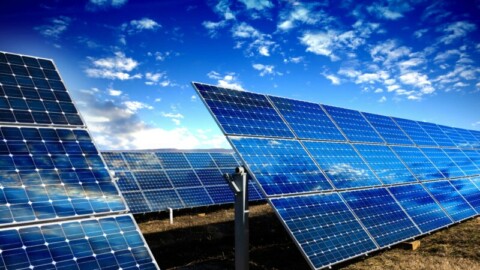by Catherine Tanna, Managing Director, EnergyAustralia
EnergyAustralia has a vision for how modern energy suppliers can operate, providing customers with a product that is cleaner, more reliable, and more affordable than that offered in recent years. Here, Managing Director Catherine Tanna outlines this vision, and discusses the factors that need to be in place to achieve these goals.
Energy Australia owns some of our country’s largest coal-fired power stations and is one of the three largest generators of electricity, supplying reliable and affordable gas and electricity to 2.6 million households and business accounts across eastern Australia.
We recognise however, that to balance the delivery of reliable, affordable, and cleaner energy, the way in which we generate, deliver, and use energy has to change.
Any transition from these large, older coal-fired power stations to newer technologies will require an orderly, realistic transition plan, and stable energy policy. The plan must reduce generation from fossil-fuelled power stations to make space for renewable energy, and encourage investment in cleaner forms of energy.
EnergyAustralia is actively exploring a number of solutions to this problem. A pumped hydro technology solution using seawater is one example.
Pumped hydro technology works like a giant battery. Its great advantage lies in complementing the shift to renewable energy by providing a reliable store of affordable power. On hot days, when demand spikes, a pumped hydro plant can be brought into action in minutes, keeping the lights on and costs down.
At Lithgow in New South Wales, we’re assessing the viability of converting part of our Mount Piper power station to run on non-recyclable household materials, an Australian first. This energy recovery project has great potential to improve the efficiency of the Mount Piper plant, (already one of the most reliable and efficient plants of its kind in NSW), reduce landfill, and allow the power station to produce more energy using the same amount of coal.
We’re also supporting the development of new wind and solar projects across eastern Australia in a $1.5 billion program announced in December last year. We’ve already announced power purchase agreements for four solar and wind farm projects in New South Wales, Victoria, and Queensland – representing around 285MW of renewable power.
Finding these new ways to generate energy will be critical to ensuring Australia’s transition to cleaner energy also delivers reliable and affordable supplies for families
and business.

Catherine Tanna is Managing Director of EnergyAustralia, one of the country’s leading energy retailers, providing gas and electricity to more than 2.6 million customer accounts around Australia.
We don’t have to speculate about what the future holds without an orderly, realistic transition plan. The past 12 months have given us a good idea of what to expect.
We’ve seen a state-wide blackout in South Australia, load-shedding in South Australia and New South Wales, large generation capacity leaving the market on short notice, wholesale market volatility, and large businesses facing real challenges securing supplies of gas. And of course, we’ve seen rising electricity prices for households and businesses across the country.
It seems like it has come on us with little warning. It’s more shocking because for the past two decades energy supply has been reliable and prices have been steady – even falling.
Now, in 2017, our residential customers tell us their electricity bill is their top concern among household costs.
The staggering thing is there is no shortage of existing and potential energy supply in Australia. The problem isn’t capacity – it’s planning.
We have enough electricity generation capacity, just not where and when it’s needed. And there are abundant supplies of gas, but they stay in the ground.
And customers are wearing the cost.
For example, retail electricity prices in New South Wales increased almost 10 per cent in 2016, while average prices in Victoria increased 8-10 per cent for 2017. And despite Australia’s abundant natural resources, we have struggled to secure gas supply on behalf of some larger industrial customers.
That’s why any approach to energy must start and end by considering impacts on customers, particularly families and small businesses.
It brings us back to the exam question: how do we deliver reliable, affordable, and cleaner energy for everyone in Australia?

Since December last year, EnergyAustralia has announced four power purchase agreements for solar and wind farm projects in New South Wales, Victoria, and Queensland – representing around 285MW of renewable power.
When one of those elements is given priority over the others you get the situation we have right now: volatile markets, problems with the security of supply, and rising prices.
No-one pretends it’s an easy fix. But the answer isn’t rocket science.
It’s giving business confidence to invest, whether that’s backing new, cleaner generation to replace coal, or entering long-term energy contracts.
Given our starting point, creating those conditions will be a challenge. For EnergyAustralia to have the confidence to invest, we need three key things:
- Policy stability – we need to know any decision we make today won’t be undone next year; there is enough risk in this industry already from technology and intense competition without policy flip flop. We think a national, bipartisan approach is critical.
- Market transparency – knowing how much fuel thermal generators have left is critical to knowing when and where to invest in new capacity.
- A firm, durable emissions trajectory – in other words, we need some clear signal to investors to reduce carbon intensive generation. Some form of emissions intensity scheme is the commonly mentioned mechanism, but it doesn’t have to be that. An emissions cap for large generators might work just as well.
Now, none of that is revolutionary.
The National Electricity Market is working; yes, it needs enhancements but, despite what you may have read, it does not need a radical overhaul. It’s doing exactly what it’s designed to do, and when it is allowed to, the NEM has shown it can adapt and balance price with system stability.
We get problems when the rest of us play at picking favourites out of cleaner energy, reliability, and affordability.
Success is providing reliable, affordable, and cleaner supplies of energy for all Australians. And that is most likely delivered by a durable, stable bipartisan and national approach to energy.

















